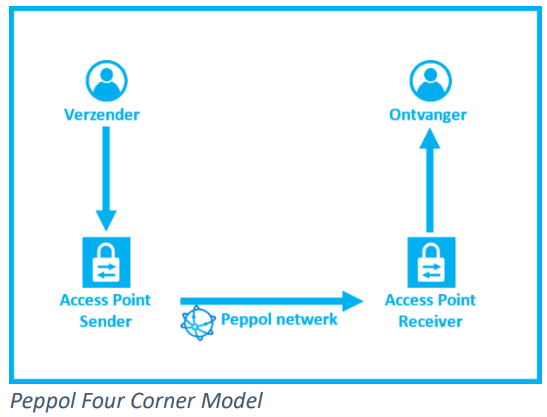The era of the e-invoice is approaching fast
There’s no getting around it, but come 2026, all B2B invoices will have to be sent and received digitally. However, KBC Brussels is on hand make things easy for you. That’s because we know your time is precious and you’d rather spend it on your business than on paperwork. On this page, you’ll find answers to some important questions on e-invoicing.
An electronic invoice is an invoice that is created, sent and received in a structured electronic format (XML), enabling it to be processed automatically and electronically. That increases efficiency due to the fact that automatic processing is faster, safer, cheaper and leads to fewer errors. However, you need to adapt your invoicing systems to be able to send and receive e-invoices.
Important to know: a PDF invoice sent by e-mail is not an e-invoice and loses its legal validity. This also holds true for paper invoices sent by post.
- Payments are collected more quickly thanks to the faster approval and payment processes.
- Less risk of errors as you no longer misplace invoices or enter incorrect data.
- Improved communication between buyer and supplier ensures invoices are paid on time and disputes are followed up more quickly.
- More transparent cash flow thanks to real-time monitoring of billing and payment status.
- Less chance of invoice fraud as invoices are sent through the secure Peppol network (e-invoices are encrypted and cannot be intercepted).
E-invoices are sent in Belgium via the Peppol network, i.e. a secure network that can only be accessed through a certified Access Point Provider. This closed network ensures that sensitive financial data, such as e-invoices, can be exchanged securely between senders and recipients. Peppol is also increasingly recognised and used as a standard outside Europe.
To send and receive files via Peppol, you need access to a Peppol Access Point. Once that access is configured, you can send and receive invoices automatically using your accounting software. In many cases, you can also process an e-invoice automatically after receiving it.
Learn more at KBC Invoicing Services.
At present, e-invoicing is mandatory for all public tenders exceeding 3 000 euros and will become mandatory for all B2B invoices as of 2026.
B2G: Business-to-Government
As regards invoicing a government body or agency, e-invoicing has been mandatory for all contracts over 3 000 euros since 1 March 2024. Government authorities in Belgium receive their e-invoices through the Mercurius platform, a federal platform that can be accessed by all Belgian government bodies and agencies and is accessible via Peppol.

B2B: Business-to-Business
From 1 January 2026, e-invoicing will become mandatory for all B2B transactions in Belgium, based on the Peppol four corner model (see diagrams). Over time, it will develop into a five corner model with data also being shared with the VAT authorities. In this regard, Peppol will facilitate a connection to a government platform for checking VAT.

B2C: Business-to-Customer
Currently, there are no indications that mandatory e-invoicing will also be introduced for private individuals in the future.
Each country is working hard to comply with the roadmap drawn up at European level. The current status of e-invoicing in our neighbouring countries and certain other countries in Europe is set out below.
| Country | E-invoicing mandatory or not mandatory for B2B |
| Luxembourg | Optional |
| Netherlands | Optional |
| Germany | Phased implementation from 2025 |
